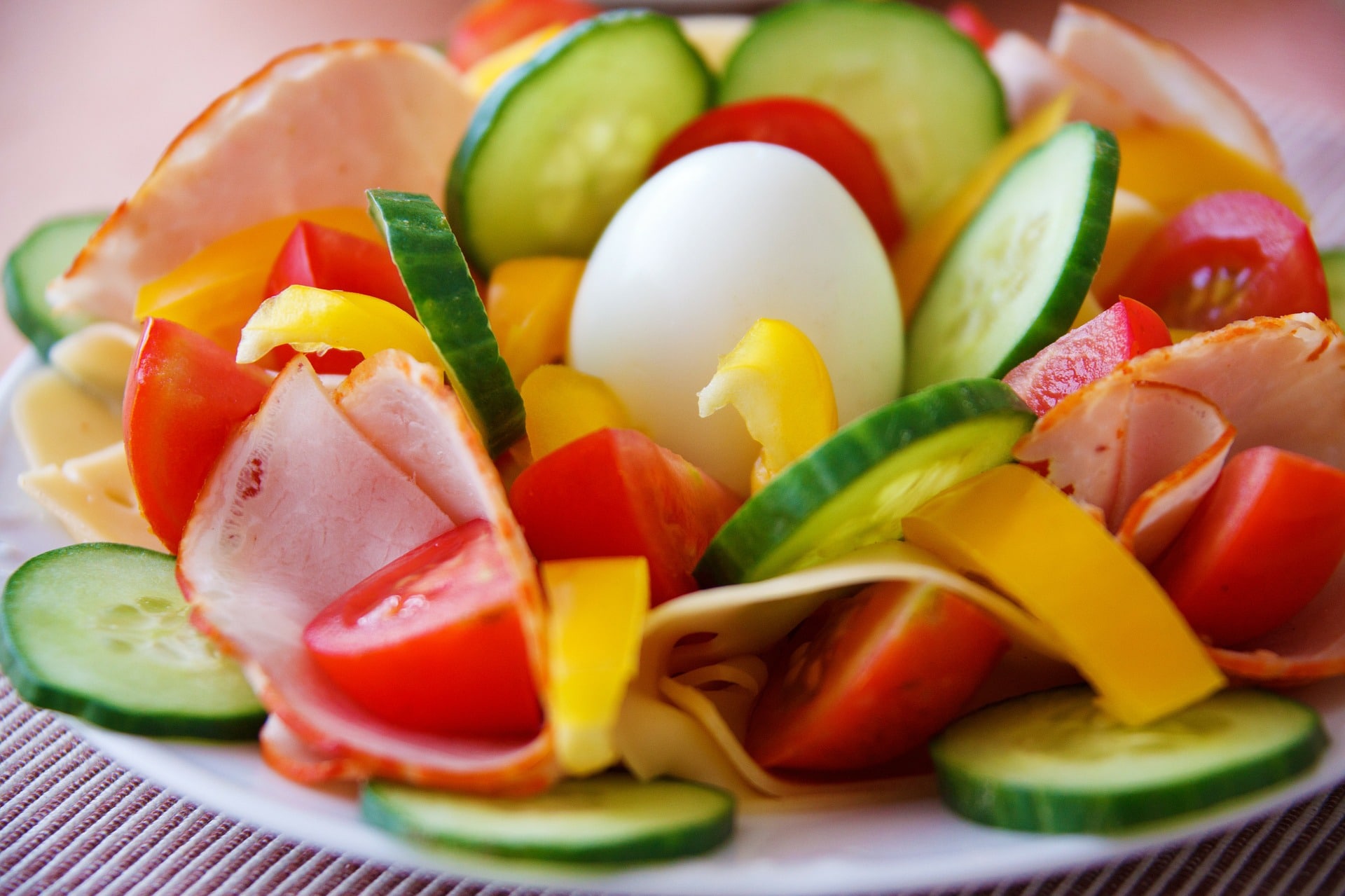- 50% of your plate- Veggies and Fruit
- Plenty of extra micro nutrients that you don’t get from other sources
- Keep Protein Lean
- Lean beef, chicken, turkey, fish
- Go with Whole Grains
- Whole Grains have more nutrients like fiber.
- Add Some Dairy
- As long as you don’t have problems with lactose, dairy is a good way to get extra calcium in your system and most are enriched with Vitamin D (if you can’t get outside and soak up sun rays).
- Say “No” to Sauces
- Thick sauces like gravy or cheese sauce add a lot of extra calories to your meal. Stick with things like olive oil (and other healthy fats) to top your meals.
- Slow Down
- It takes 20 minutes for your bodies “I’m Full” sensor to kick in. When you eat slowly, you give your body time to tell you you’re full before you over eat.
- Use a Smaller Plate
- Even though you have less food on your plate, because it is taking up more of the surface area of the plate our minds are tricked into thinking we ate more than we did.
- Cut Out the Take Out
- Cooking at homes allows you to control the ingredients that go into each meal.
- Mix in Some Variety
- There’s always a new fruit/veggie/recipe to try, eating healthy doesn’t have to be boring.
- Rethink Dessert
- It’s ok to indulge your sweet tooth, but if it turns into an every night occurrence, switch the chocolate cake out for some fresh fruit.
10 Tips for Building Healthier Meals

